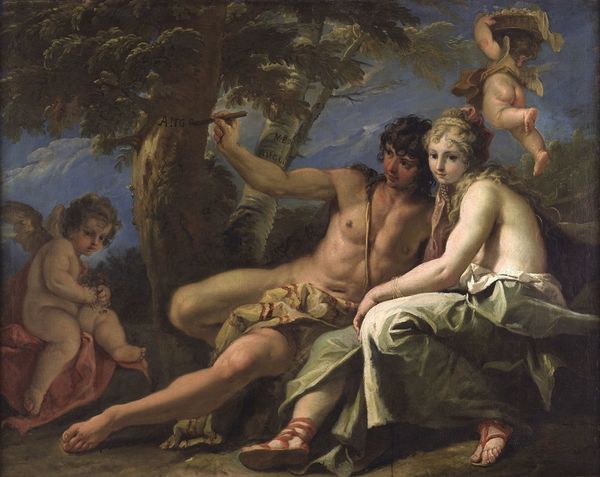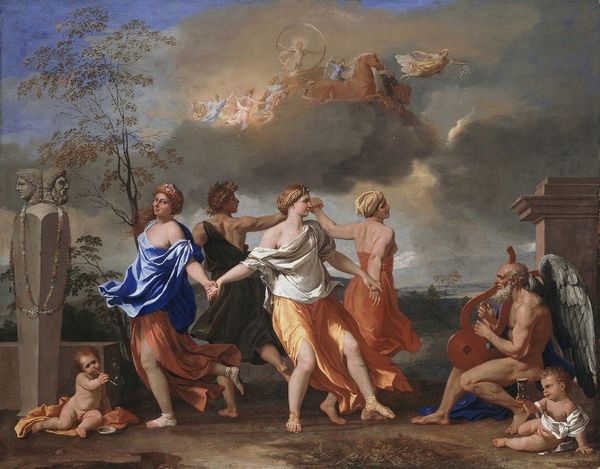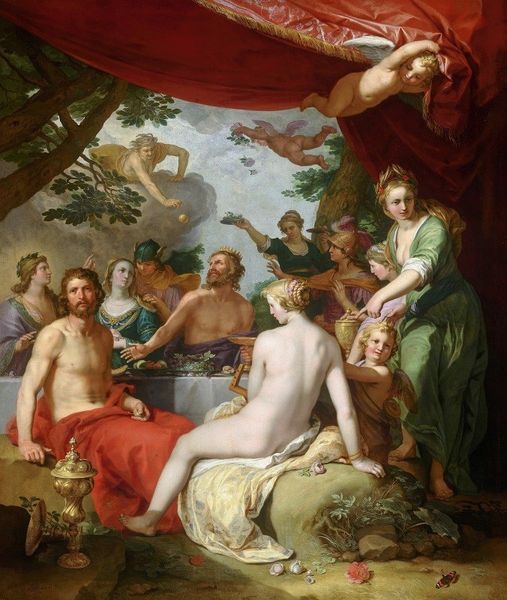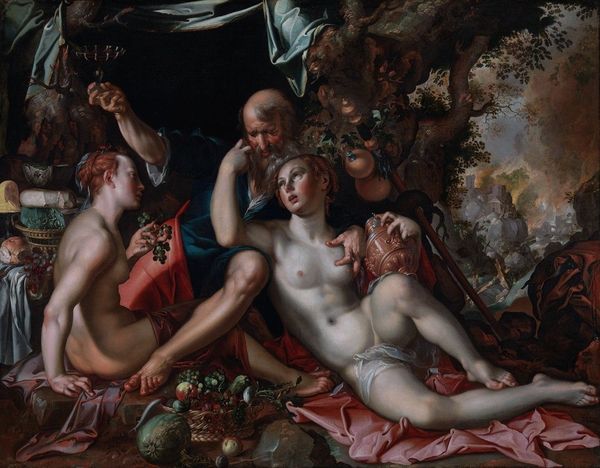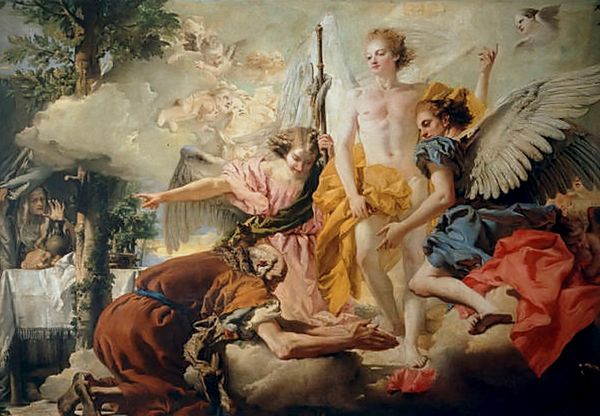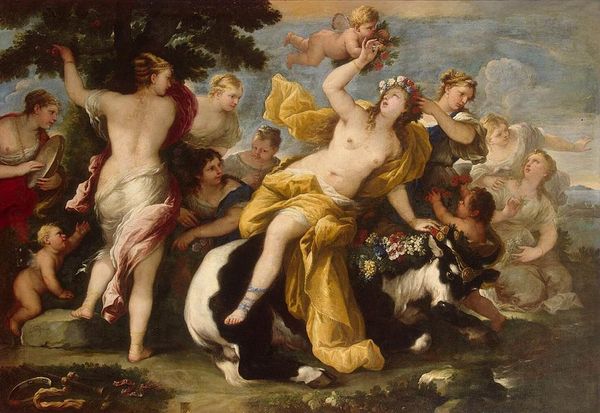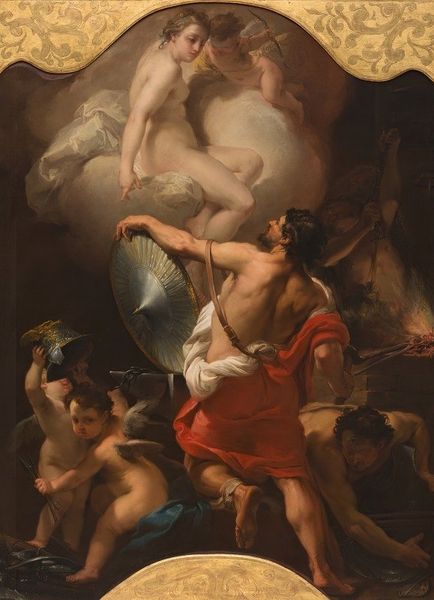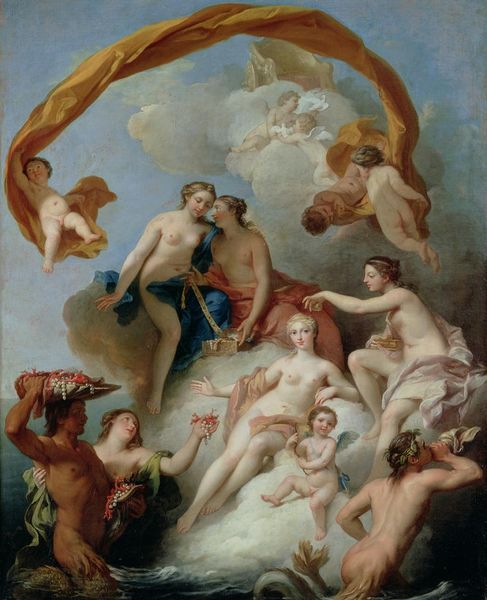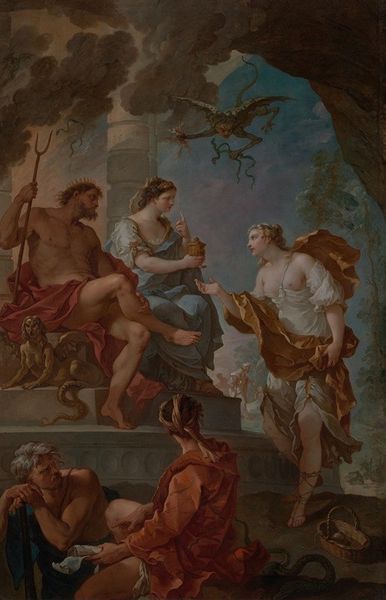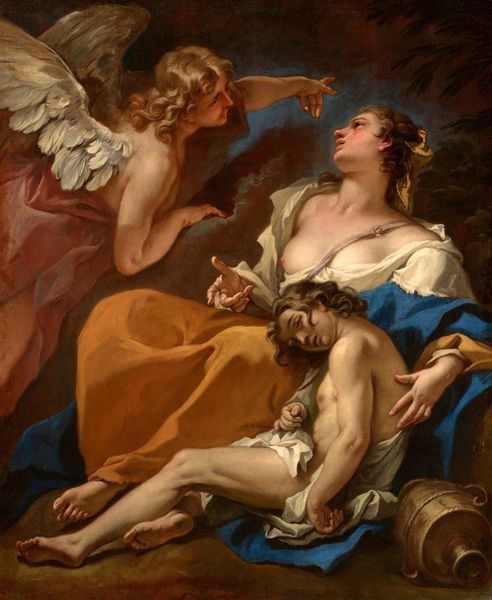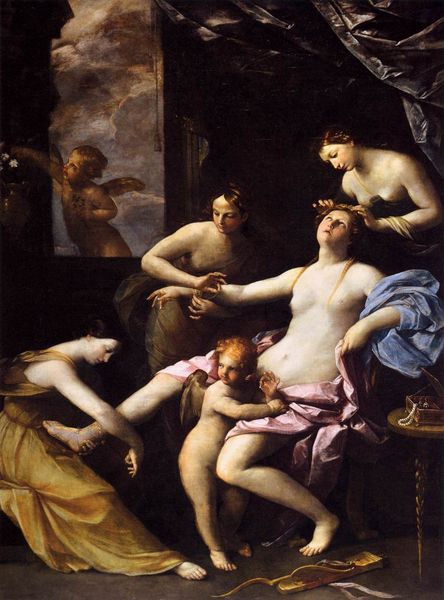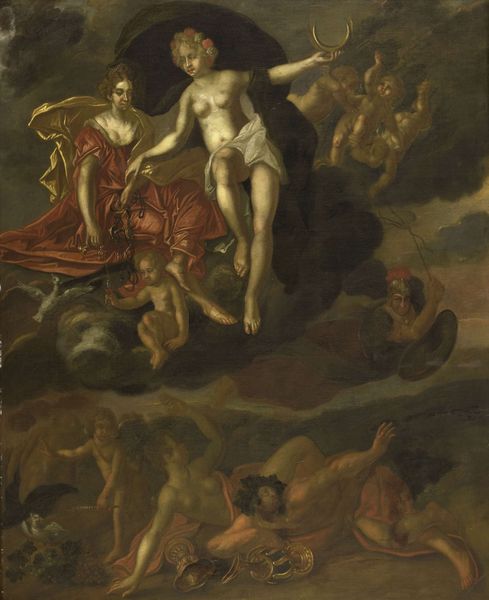
Copyright: Public Domain: Artvee
Curator: Let's turn our attention to Sebastiano Ricci's "Flora," painted between 1712 and 1716. It’s a luminous oil on canvas, showcasing his distinctive baroque style. What’s your initial reaction? Editor: Well, my first impression is of a sensuous, almost dreamlike scene. There's a definite theatrical quality with the figures posed among the billowing clouds and the vibrant burst of flowers. The soft colors give it a romantic feel, even though the figures themselves are rendered with a very classical approach. Curator: Indeed. Ricci was masterfully blending Venetian traditions with an increasingly international style during this period. He received commissions from across Europe and England at the time. His handling of allegory and mythology within portraiture tells us a lot about the expectations of the European elite. Flora, the goddess of springtime and fertility, was a very popular subject in the eighteenth century, reflecting societal interests in nature, abundance, and renewal. Editor: Right, and let's not overlook the overt display of power in its construction! Who were these goddesses for, really? Commissioned, and enjoyed primarily by male landowners. In a very clear statement about who controls, possesses, and can name elements within this space. Consider too, how those cherubic figures romanticize classical imagery while also reinforcing gender roles and hierarchies. There’s a politics here that is unavoidable. Curator: Yes, those elements of power, patronage, and politics absolutely shaped the narrative Ricci created. However, it's fascinating how Ricci manages to incorporate so much sensuality and light while still maintaining a level of decorum fitting for the period. This "Flora" exists very consciously in the traditions of both portraiture and mythology. Think about how interpretations changed alongside society, evolving towards ideas about personal identity rather than solely dynastic authority. Editor: And how the representation of Flora evolved, moving her out of solely allegorical context towards more empowered individual associations as the socio-political landscape changed. Overall, paintings like Ricci’s encourage us to rethink who held the proverbial paintbrush—and the narratives they carefully, deliberately, constructed. Curator: A valuable perspective to take into account, I must agree. Considering context allows us to appreciate how these artworks played within the political spheres and shifted overtime. Editor: It’s certainly been thought provoking! This image feels even more dense, given the circumstances under which it was commissioned and who would be the eventual owner of the image.
Comments
No comments
Be the first to comment and join the conversation on the ultimate creative platform.
